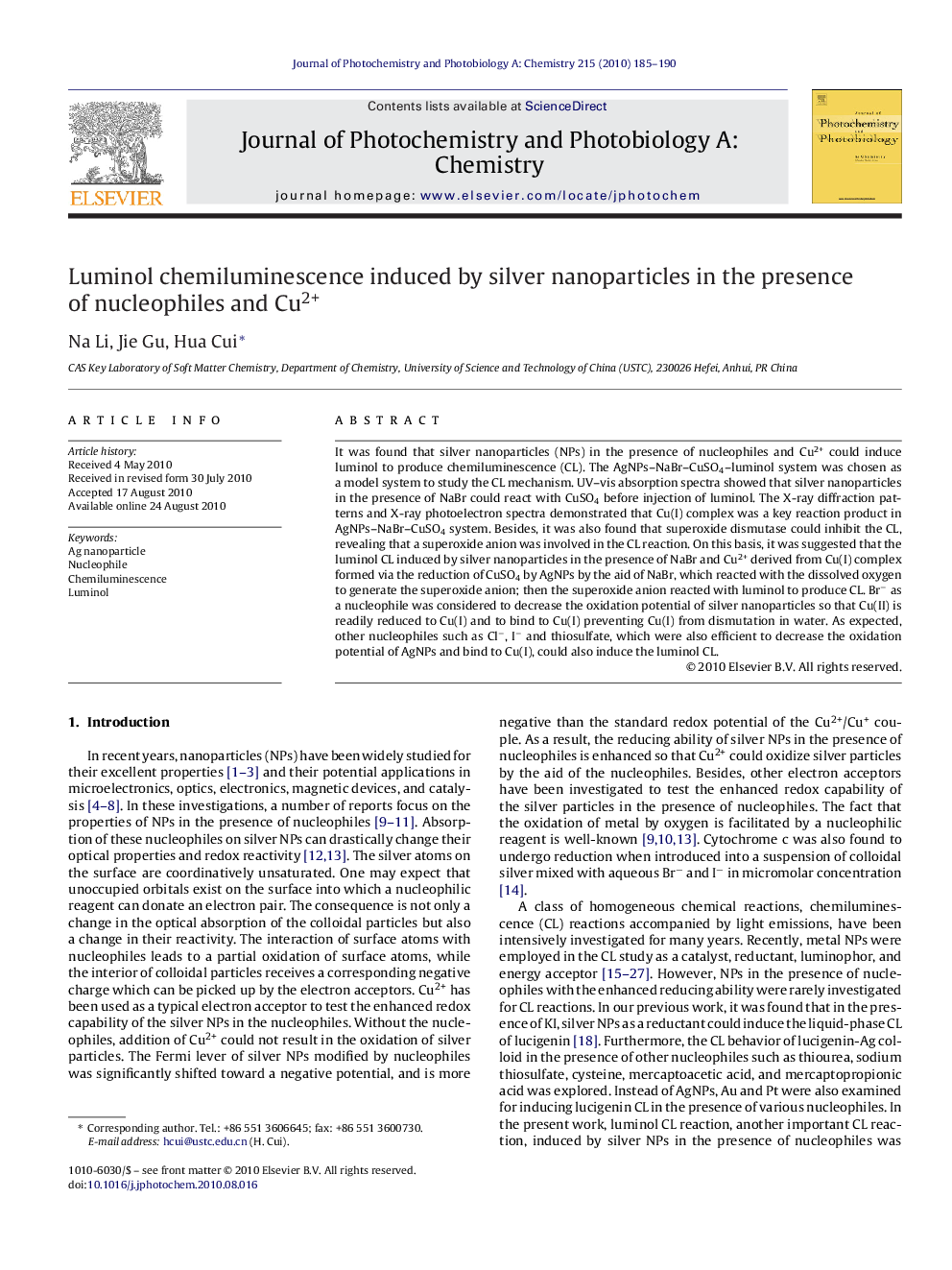| Article ID | Journal | Published Year | Pages | File Type |
|---|---|---|---|---|
| 28883 | Journal of Photochemistry and Photobiology A: Chemistry | 2010 | 6 Pages |
It was found that silver nanoparticles (NPs) in the presence of nucleophiles and Cu2+ could induce luminol to produce chemiluminescence (CL). The AgNPs–NaBr–CuSO4–luminol system was chosen as a model system to study the CL mechanism. UV–vis absorption spectra showed that silver nanoparticles in the presence of NaBr could react with CuSO4 before injection of luminol. The X-ray diffraction patterns and X-ray photoelectron spectra demonstrated that Cu(I) complex was a key reaction product in AgNPs–NaBr–CuSO4 system. Besides, it was also found that superoxide dismutase could inhibit the CL, revealing that a superoxide anion was involved in the CL reaction. On this basis, it was suggested that the luminol CL induced by silver nanoparticles in the presence of NaBr and Cu2+ derived from Cu(I) complex formed via the reduction of CuSO4 by AgNPs by the aid of NaBr, which reacted with the dissolved oxygen to generate the superoxide anion; then the superoxide anion reacted with luminol to produce CL. Br− as a nucleophile was considered to decrease the oxidation potential of silver nanoparticles so that Cu(II) is readily reduced to Cu(I) and to bind to Cu(I) preventing Cu(I) from dismutation in water. As expected, other nucleophiles such as Cl−, I− and thiosulfate, which were also efficient to decrease the oxidation potential of AgNPs and bind to Cu(I), could also induce the luminol CL.
